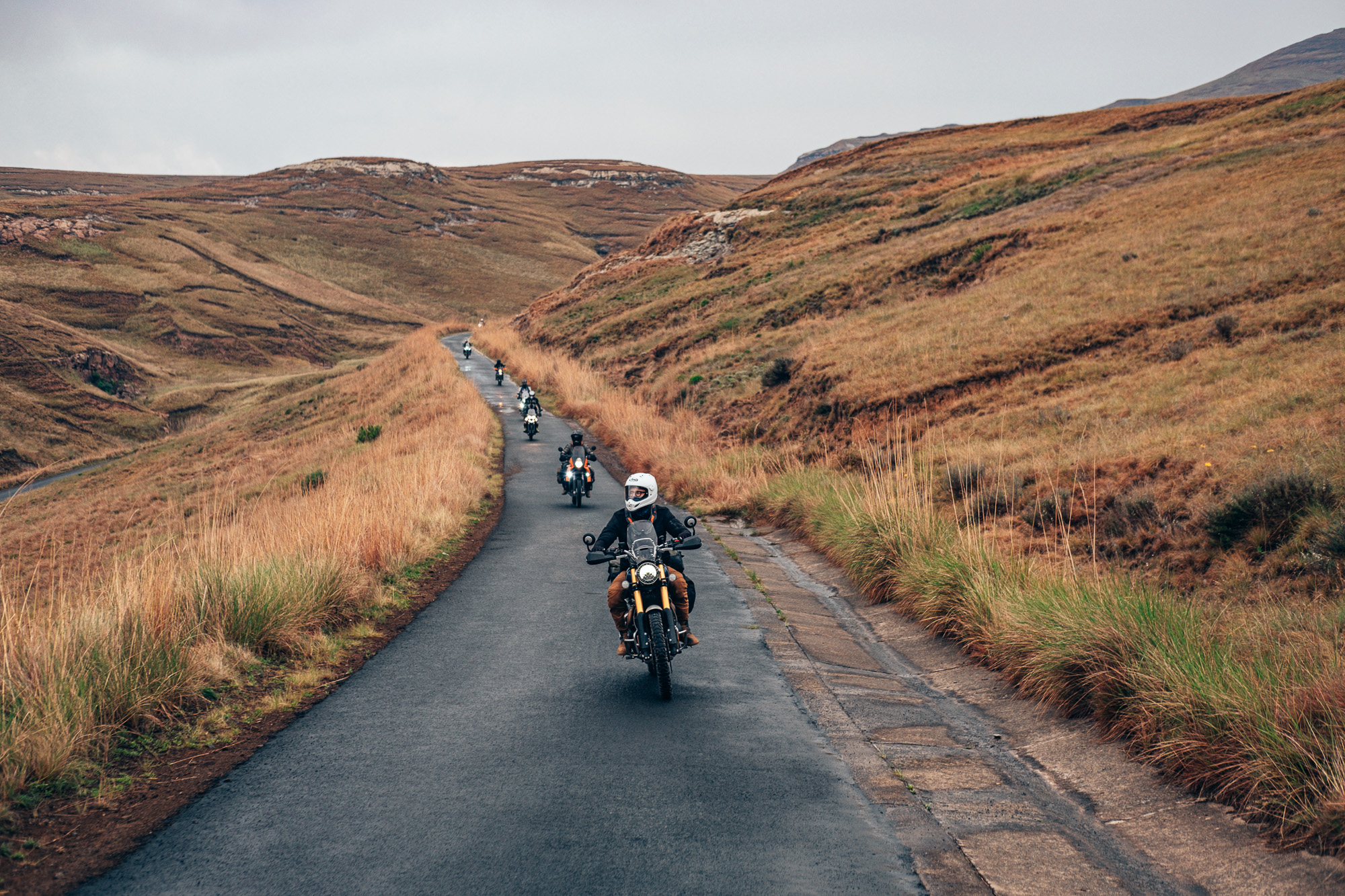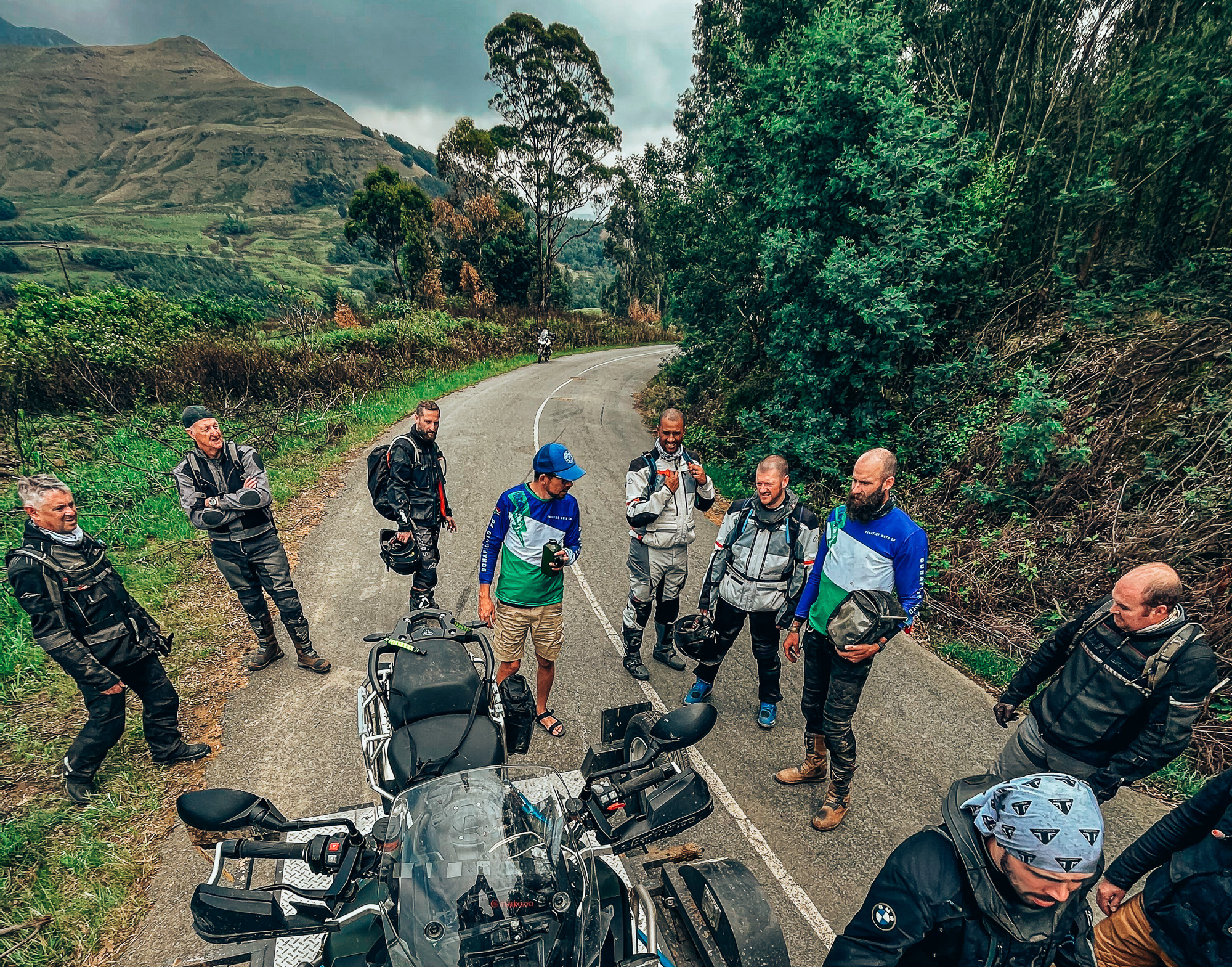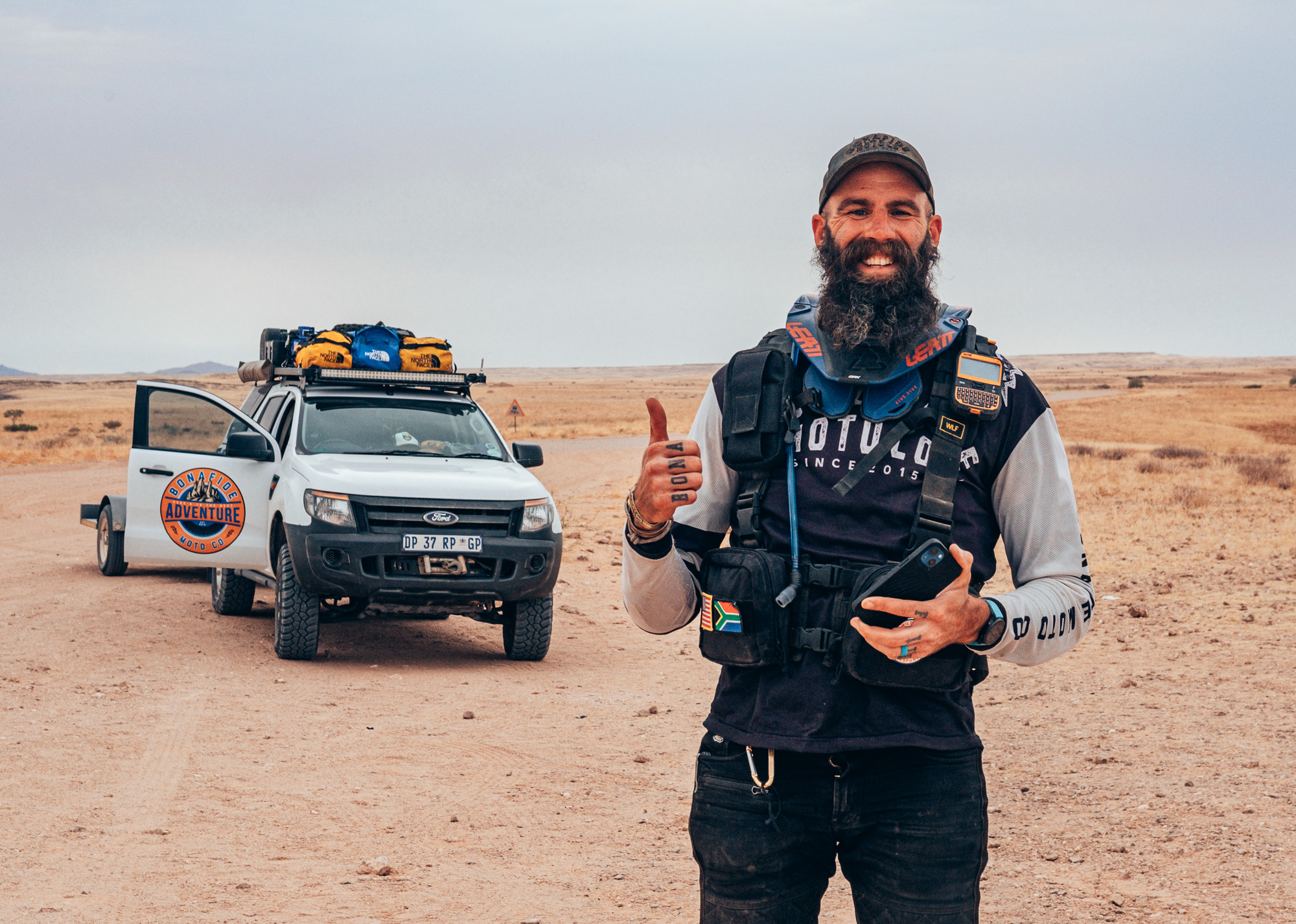When I began adventuring through some of the 700,000 kilometers of dirt roads in South Africa, it’s safe to say I didn’t have the right kit for the job. Transitioning into dirt riding, I made do with what I had at the time with gear used for my 1994 Harley Dyna.
My first true off-road motorcycle adventure was back in 2016. I was on my 2015 Triumph 900 Scrambler, headed to the iconic Sani Pass with a group of friends. My extent of riding kit at the time consisted of a pair of Red Wing Iron Ranger boots, a pair of 511 Levis, a Biltwell Gringo helmet, a Roland Sands riding jacket, and a pair of Iron and Resin riding gloves. Back then, I focused more on the “looking cool” aspect of riding and far less on the most appropriate gear for the job. I loved the nostalgic look and feel of riding a modern classic motorcycle and taking on a trip like this with a bike some would not see as suitable for the job.
It’s only been in the last few years of my riding that safety and performance gear specific to the job came to the forefront as I found myself on the bike hosting adventures at least once a month with my business, Bonafide Moto Co.
My Levis eventually got swapped out with a pair of Fuel Sergeant Sahara pants. With a nod to retro styling, they offered some slide protection and armor in the right places, steering away from the Power Ranger look typical of some adventure riding kit.

The Roland Sands jacket was swapped out for a Rev’It Sand Urban model. It gave me a lot of options to draw upon for the majority of weather found here in Southern Africa. It had rain and winter layers and was super agile without being bulky, with plenty of zips and vents that are essential in hot climates.
The Red Wing Boots got ditched back in 2021 (later than I expected), and I picked up a pair of Stylmartin Impact Boots. Too often, when traversing rocky areas, I’d put my feet down with the impression that I could snap an ankle at any time. On top of that, the Red Wings were far from ideal for rain and large puddles. I had no idea before getting the Impacts how much more confidence I’d gain in my off-road ability by having proper riding boots. My stance felt great, I had the right amount of contact with my riding pegs, and I was no longer worried about twisting an ankle every time I put my foot down.
Most recently, the one piece of kit I’m most grateful for today came after a call with the local supplier from Leatt. I was busy preparing for a summer trip to Namibia and was in the market for a few items from them: a body armor kit to wear under a riding jersey to help keep me cool in the desert and a neck brace.
Years ago, I thought a neck brace was overkill and that a good rider would never need it. But the more I rode, the more I noticed some of my customers wearing them. I eventually realized that I was increasingly putting myself at risk on the bike and that it wasn’t such a bad idea.
It took me an hour or so on my first trip with it to get used to the neck brace on the highway. As a photographer who shoots from the bike, my riding kit has to allow flexibility in motion, and I was worried the neck brace would limit my range when getting shots. I was dead wrong, though, and upon try-on was able to work around it with no issues. Although I couldn’t look up and down quite as far as I usually could, it was still possible to swivel left and right.
My first trip with the neck brace was on a recce to Lesotho, and within the first hour of the ride, my confidence in the neck brace soured. I immediately observed that the neck brace would limit my forward and backward range of motion in the wind at high speeds. A prime example is when you’re on a two-lane road (or highway with no barrier), and a massive truck is coming from the opposite direction, and that big gust of wind sends your head backward—yeah, it stops that. Still, I decided to stick with it.

In late September this year, I took a group of riders from Johannesburg to Sani Pass and had all my right kit. On the second morning, we set out from Ampitheatre Backpackers Lodge en route to Himeville on some wide-open tar roads, turned toward the mountains of Lesotho on some dirt, and then were back onto some scenic narrow tar roads again. I kept noticing a lot of blind rises on this stretch and became a bit more cautious as I didn’t know what was going to be on the other side of the next hill.
At some point, I was leading the way up another hill (at a manageable speed), and as I got to the top, I realized my mind had gone blank. I found myself just before the turn’s apex and missed my opportunity to make the turn. In a panic, I pulled the brakes, but it was too late. I was still in off-road mode, causing the rear tyre to lock up, which forced the bike down. I began sliding with the bike on the asphalt for 10 meters or so, then onto the grass, until eventually, a nearby tree stopped my slide. The downside of the tree stopping my momentum—and preventing me from going off the hill—was that it immediately brought me to a stop, and the force made my neck tuck inward.
As soon as the bike came to a stop, it seemed that I was okay overall. Most importantly, I was alive, but something was very wrong with my neck. With every move I made, I could feel new sensations in my neck. My ego wanted to play it off, and I contemplated getting back on the bike and continuing to lead the guys to the Pass.
After a few moments, I listened to my buddy Tinus tell me that they were going to load the bike onto the trailer and for me to get in the Defender 90 support vehicle—not the most ideal transport choice on a dirt road with a neck injury, as it turns out. Initially, I thought I’d rest up in the car and then continue on the moto journey, but after phoning my wife, I realized the hospital was the place I needed to be. I think it was the part when I told her it was difficult to hold up my neck that brought the danger of the situation home.
That hour or so in the Defender was brutal. The joke was that I had scraped my knee in the accident but broke my neck on the way to the hospital. Once there, I received X-rays, a CT scan, and an MRI. The scans showed I had fractured two vertebrae. My doctor was conservative and chose not to operate. I was in the hospital for two nights and spent three nights in the Midlands recovering before making the four-hour drive home to Johannesburg. My recovery protocol was that I’d spend three months in a neck brace to heal up (one more month to go as I write this).

My doctor told me I was extremely lucky to be wearing a protective neck brace during my accident, and had I not been wearing it, I’d likely have a different quality of life right now or possibly worse. Although I had fractured two vertebrae, the Leatt neck brace did its job and saved me. It had prevented my head and neck from moving any further than it did, which could have caused paralysis. I know for a fact that the brace also gave me another opportunity to ride another day and continue my adventures with Bonafide.
For those riders who prefer looks over safety, consider making some changes where you can, as soon as you can; it’s in your best interest. Getting the right riding kit takes time and can also be a significant investment. For those on a budget like myself, I have heard that it’s possible in South Africa to get prescriptions from a doctor for Leatt’s neck and knee braces. It’s worth consulting with your local physician, no matter where you live.
No matter how good of a rider you might think you are, you never know what will be waiting for you around the next corner. Having that extra piece of safety equipment you might never need could save your life and allow you to see another day on a bike.

Editor’s Note: This article was originally published in Overland Journal’s Winter 2023 Issue.
Our No Compromise Clause: We do not accept advertorial content or allow advertising to influence our coverage, and our contributors are guaranteed editorial independence. Overland International may earn a small commission from affiliate links included in this article. We appreciate your support.


